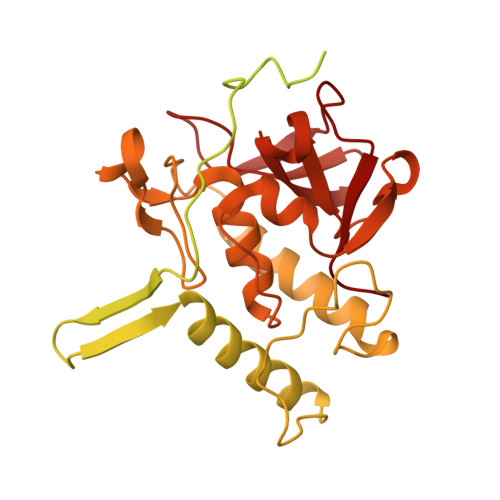Mutational and structural study of RipA, a key enzyme in Mycobacterium tuberculosis cell division: evidence for the L-to-D inversion of configuration of the catalytic cysteine.
Squeglia, F., Ruggiero, A., Romano, M., Vitagliano, L., Berisio, R.(2014) Acta Crystallogr D Biol Crystallogr 70: 2295-2300
- PubMed: 25195744
- DOI: https://doi.org/10.1107/S1399004714013674
- Primary Citation of Related Structures:
4Q4G, 4Q4N, 4Q4T - PubMed Abstract:
RipA is a key cysteine protease of Mycobacterium tuberculosis as it is responsible for bacterial daughter-cell separation. Although it is an important target for antimicrobial development, its mechanism of action and its interaction pattern with its substrate are hitherto unknown. By combining crystallographic and mutational studies with functional assays and molecular modelling, it is shown that the catalytic activity of the enzyme relies on a Cys-His-Glu triad and the impact of the mutation of each residue of the triad on the structure and function of RipA is analysed. Unexpectedly, the crystallographic analyses reveal that mutation of the glutamic acid to alanine results in inversion of the configuration of the catalytic cysteine. The consequent burial of the catalytic cysteine side chain explains the enzyme inactivation upon mutation. These data point to a novel role of the acidic residue often present in the triad of cysteine proteases as a supervisor of cysteine configuration through preservation of the local structural integrity.
Organizational Affiliation:
Institute of Biostructures and Bioimaging, CNR, Naples, Italy.














